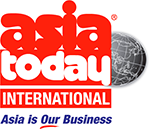-
SGX seeks diversity of listings
April 26, 2016
HAVING steamlined its listing rules, the Singapore Stock Exchange is starting to spread the message that it is open for business to companies seeking a dual or secondary listing . . .

-
Saturday, April 20 2024 | ASIA TODAY INTERNATIONAL - Reporting the Business that Matters in Asia
HAVING steamlined its listing rules, the Singapore Stock Exchange is starting to spread the message that it is open for business to companies seeking a dual or secondary listing . . .